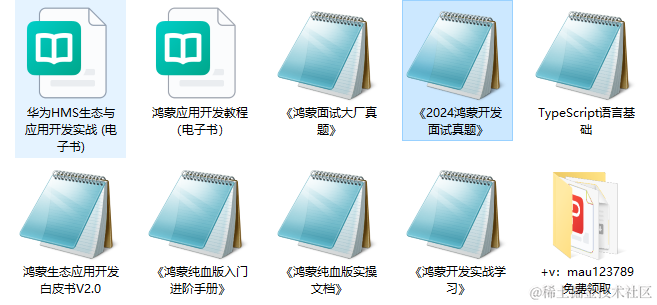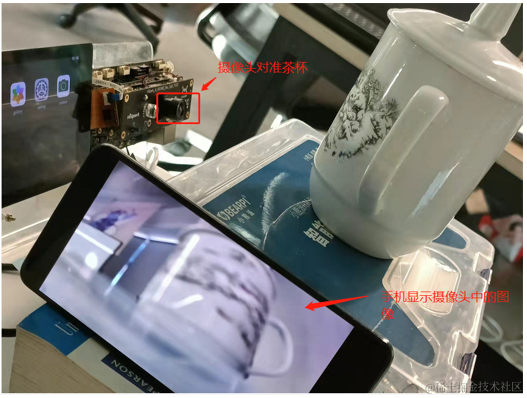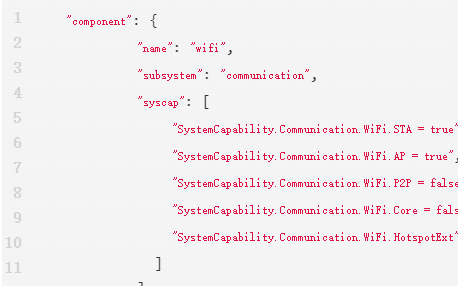模块
模块配置规则
编译子系统通过模块、部件和产品三层配置来实现编译和打包。模块就是编译子系统的一个目标,包括(动态库、静态库、配置文件、预编译模块等)。模块要定义属于哪个部件,一个模块只能归属于一个部件。OpenHarmony使用定制化的Gn模板来配置模块规则,Gn语法相关的基础知识请参考
以下是常用的模块配置规则:
# C/C++模板
ohos_shared_library
ohos_static_library
ohos_executable
ohos_source_set
# 预编译模板:
ohos_prebuilt_executable
ohos_prebuilt_shared_library
ohos_prebuilt_static_library
#hap模板
ohos_hap
ohos_app_scope
ohos_js_assets
ohos_resources
#rust模板
ohos_rust_executable
ohos_rust_shared_library
ohos_rust_static_library
ohos_rust_proc_macro
ohos_rust_shared_ffi
ohos_rust_static_ffi
ohos_rust_cargo_crate
ohos_rust_systemtest
ohos_rust_unittest
ohos_rust_fuzztest
#其他常用模板
#配置文件
ohos_prebuilt_etc
#sa配置
ohos_sa_profile
ohos开头的模板与内建模板的差异主要在于:推荐使用ohos定制模板。
C/C++模板示例
开发前请熟悉鸿蒙开发指导文档:[gitee.com/li-shizhen-skin/harmony-os/blob/master/README.md]
ohos开头的模板对应的.gni文件路径在:openharmony/build/templates/cxx/cxx.gni。
ohos_shared_library示例
import("//build/ohos.gni")
ohos_shared_library("helloworld") {
sources = ["file"]
include_dirs = [] # 如有重复头文件定义,优先使用前面路径头文件。
cflags = [] # 如重复冲突定义,后面的参数优先生效,也就是该配置项中优先生效。
cflags_c = []
cflags_cc = []
ldflags = [] # 如重复冲突定义,前面参数优先生效,也就是ohos_template中预制参数优先生效。
configs = []
deps = [] # 部件内模块依赖
external_deps = [ # 跨部件模块依赖定义
"part_name:module_name", # 定义格式为 "部件名:模块名称"。
] # 这里依赖的模块必须是依赖的部件声明在inner_kits中的模块。
output_name = [string] # 模块输出名
output_extension = [] # 模块名后缀
module_install_dir = "" # 模块安装路径,缺省在/system/lib64或/system/lib下; 模块安装路径从system/,vendor/后开始指定。
relative_install_dir = "" # 模块安装相对路径,相对于/system/lib64或/system/lib;如果有module_install_dir配置时,该配置不生效。
part_name = "" # 必选,所属部件名称
output_dir
# Sanitizer配置,每项都是可选的,默认为false/空。
sanitize = {
# 各个Sanitizer开关
cfi = [boolean] # 控制流完整性检测
cfi_cross_dso = [boolean] # 开启跨so调用的控制流完整性检测
integer_overflow = [boolean] # 整数溢出检测
boundary_sanitize = [boolean] # 边界检测
ubsan = [boolean] # 部分ubsan选项
all_ubsan = [boolean] # 全量ubsan选项
...
debug = [boolean] # 调测模式
blocklist = [string] # 屏蔽名单路径
}
testonly = [boolean]
license_as_sources = []
license_file = [] # 后缀名是.txt的文件
remove_configs = []
no_default_deps = []
install_images = []
install_enable = [boolean]
symlink_target_name = []
version_script = []
use_exceptions = []
}
ohos_static_library示例
import("//build/ohos.gni")
ohos_static_library("helloworld") {
sources = ["file"] # 后缀名是.c的相关文件
include_dirs = ["dir"] # 包含目录
configs = [] # 配置
deps = [] # 部件内模块依赖
part_name = "" # 部件名称
subsystem_name = "" # 子系统名称
cflags = []
external_deps = [ # 跨部件模块依赖定义,
"part_name:module_name", # 定义格式为 "部件名:模块名称"
] # 这里依赖的模块必须是依赖的部件声明在inner_kits中的模块。
lib_dirs = []
public_configs = []
# Sanitizer配置,每项都是可选的,默认为false/空
sanitize = {
# 各个Sanitizer开关
cfi = [boolean] # 控制流完整性检测
cfi_cross_dso = [boolean] # 开启跨so调用的控制流完整性检测
integer_overflow = [boolean] # 整数溢出检测
boundary_sanitize = [boolean] # 边界检测
ubsan = [boolean] # 部分ubsan选项
all_ubsan = [boolean] # 全量ubsan选项
...
debug = [boolean] # 调测模式
blocklist = [string] # 屏蔽名单路径
}
remove_configs = []
no_default_deps = []
license_file = [] # 后缀名是.txt的文件
license_as_sources = []
use_exceptions = []
}
ohos_executable示例
import("//build/ohos.gni")
ohos_executable("helloworld") {
configs = [] # 配置
part_name = "" # 部件名称
subsystem_name = "" # 子系统名称
deps = [] # 部件内模块依赖
external_deps = [ # 跨部件模块依赖定义,
"part_name:module_name", # 定义格式为 "部件名:模块名称"
] # 这里依赖的模块必须是依赖的部件声明在inner_kits中的模块。
ohos_test = []
test_output_dir = []
# Sanitizer配置,每项都是可选的,默认为false/空
sanitize = {
# 各个Sanitizer开关
cfi = [boolean] # 控制流完整性检测
cfi_cross_dso = [boolean] # 开启跨so调用的控制流完整性检测
integer_overflow = [boolean] # 整数溢出检测
boundary_sanitize = [boolean] # 边界检测
ubsan = [boolean] # 部分ubsan选项
all_ubsan = [boolean] # 全量ubsan选项
...
debug = [boolean] # 调测模式
blocklist = [string] # 屏蔽名单路径
}
testonly = [boolean]
license_as_sources = []
license_file = [] # 后缀名是.txt的文件
remove_configs = []
static_link = []
install_images = []
module_install_dir = "" # 模块安装路径,从system/,vendor/后开始指定
relative_install_dir = ""
symlink_target_name = []
output_dir = [directory] # 存放输出文件的目录
install_enable = [boolean]
version_script = []
use_exceptions = []
}
ohos_source_set示例
import("//build/ohos.gni")
ohos_source_set("helloworld") {
sources = ["file"] # 后缀名是.c的相关文件
include_dirs = [] # 包含目录
configs = [] # 配置
public = [] # .h类型头文件
defines = []
public_configs = []
part_name = "" # 部件名称
subsystem_name = "" # 子系统名称
deps = [] # 部件内模块依赖
external_deps = [ # 跨部件模块依赖定义,
"part_name:module_name", # 定义格式为 "部件名:模块名称"
] # 这里依赖的模块必须是依赖的部件声明在inner_kits中的模块
# Sanitizer配置,每项都是可选的,默认为false/空
sanitize = {
# 各个Sanitizer开关
cfi = [boolean] # 控制流完整性检测
cfi_cross_dso = [boolean] # 开启跨so调用的控制流完整性检测
integer_overflow = [boolean] # 整数溢出检测
boundary_sanitize = [boolean] # 边界检测
ubsan = [boolean] # 部分ubsan选项
all_ubsan = [boolean] # 全量ubsan选项
...
debug = [boolean] # 调测模式
blocklist = [string] # 屏蔽名单路径
}
testonly = [boolean]
license_as_sources = []
license_file = []
remove_configs = []
no_default_deps = []
license_file = [] # 后缀名是.txt的文件
license_as_sources = []
use_exceptions = []
}
 注意 :
注意 :
- 只有sources和part_name是必选,其他都是可选的;
- Sanitizer配置详见:[Sanitizer使用说明]
预编译模板示例
预编译模板的.gni相关文件路径在:openharmony/build/templates/cxx/prebuilt.gni。
ohos_prebuilt_executable示例
import("//build/ohos.gni")
ohos_prebuilt_executable("helloworld") {
source = "file" # 源
output = []
install_enable = [boolean]
deps = [] # 部件内模块依赖
public_configs = []
subsystem_name = "" # 子系统名
part_name = "" # 部件名
testonly = [boolean]
visibility = []
install_images = []
module_install_dir = "" # 模块安装路径,从system/,vendor/后开始指定
relative_install_dir = "" # 模块安装相对路径,相对于system/etc;如果有module_install_dir配置时,该配置不生效。
symlink_target_name = []
license_file = [] # 后缀名是.txt的文件
license_as_sources = []
}
ohos_prebuilt_shared_library示例
import("//build/ohos.gni")
ohos_prebuilt_shared_library("helloworld") {
source = "file" # 一般是后缀为.so的文件
output = []
install_enable = [boolean]
deps = [] # 部件内模块依赖
public_configs = []
subsystem_name = "" # 子系统名
part_name = "" # 部件名
testonly = [boolean]
visibility = []
install_images = []
module_install_dir = "" # 模块安装路径,从system/,vendor/后开始指定
relative_install_dir = "" # 模块安装相对路径,相对于system/etc;如果有module_install_dir配置时,该配置不生效。
symlink_target_name = [string]
license_file = [string] # 后缀名是.txt的文件
license_as_sources = []
}
ohos_prebuilt_static_library示例
import("//build/ohos.gni")
ohos_prebuilt_static_library("helloworld") {
source = "file" # 一般是后缀为.so的文件
output = []
deps = [] # 部件内模块依赖
public_configs = []
subsystem_name = "" # 子系统名
part_name = "" # 部件名
testonly = [boolean]
visibility = []
license_file = [string] # 后缀名是.txt的文件
license_as_sources = []
}
 注意 :只有sources和part_name是必选,其他都是可选的。
注意 :只有sources和part_name是必选,其他都是可选的。
Hap模板
hap模板详见:[ HAP编译构建指导]
Rust模板
rust模板详见:[ Rust模块配置规则和指导]
其他常用模板
ohos_prebuilt_etc示例:
import("//build/ohos.gni")
ohos_prebuilt_etc("helloworld") {
# ohos_prebuilt_etc模板最常用属性:
source = "file" # 指定单个原文件
module_install_dir = "" # 模块安装路径,从system/,vendor/后开始指定
subsystem_name = "" # 子系统名
part_name = "" # 必选,所属部件名称
install_images = []
relative_install_dir = "" # 模块安装相对路径,相对于system/etc;如果有module_install_dir配置时,该配置不生效。
# ohos_prebuilt_etc模板不常用属性:
deps = [] # 部件内模块依赖
testonly = [boolean]
visibility = []
public_configs = []
symlink_target_name = [string]
license_file = [string]
license_as_sources = []
}
ohos_sa_profile示例:
import("//build/ohos.gni")
ohos_sa_profile("helloworld") {
sources = [".xml"] # xml文件
part_name = "" # 部件名
subsystem_name = "" # 子系统名
}
 注意 :只有sources和part_name是必选,其他都是可选的。
注意 :只有sources和part_name是必选,其他都是可选的。
新增并编译模块
新建模块可以分为以下三种情况。主要的添加逻辑如下面的流程图所示,若没有子系统则需新建子系统并在该子系统的部件下添加模块,若没有部件则需新建部件并在其中添加模块,否则直接在原有部件中添加模块即可,需要注意的是芯片解决方案作为特殊部件是没有对应子系统的。
- 在原有部件中添加一个模块
- 新建部件并在其中添加模块
- 新建子系统并在该子系统的部件下添加模块

在原有部件中添加一个模块
在模块目录下配置BUILD.gn,根据模板类型选择对应的gn模板。
修改bundle.json配置文件。
{ "name": "@ohos/< component_name >", # HPM部件英文名称,格式"@组织/部件名称" "description": "xxxxxxxxxxxxxxxxxxx", # 部件功能一句话描述 "version": "3.1", # 版本号,版本号与OpenHarmony版本号一致 "license": "MIT", # 部件License "publishAs": "code-segment", # HPM包的发布方式,当前默认都为code-segment "segment": { "destPath": "third_party/nghttp2" }, # 发布类型为code-segment时为必填项,定义发布类型code-segment的代码还原路径(源码路径)。 "dirs": {}, # HPM包的目录结构,字段必填内容可以留空 "scripts": {}, # HPM包定义需要执行的脚本,字段必填,值非必填 "licensePath": "COPYING", "readmePath": { "en": "README.rst" }, "component": { # 部件属性 "name": "< component_name >", # 部件名称 "subsystem": , # 部件所属子系统 "syscap": [], # 部件为应用提供的系统能力 "features": [], # 部件对外的可配置特性列表,一般与build中的sub_component对应,可供产品配置。 "adapted_system_type": [], # 轻量(mini)小型(small)和标准(standard),可以是多个 "rom": "xxxKB" # ROM基线,没有基线写当前值 "ram": "xxxKB", # RAM基线,没有基线写当前值 "deps": { "components": [], # 部件依赖的其他部件 "third_party": [] # 部件依赖的三方开源软件 }, "build": { # 编译相关配置 "sub_component": [ "//foundation/arkui/napi:napi_packages", # 原有模块1 "//foundation/arkui/napi:napi_packages_ndk" # 原有模块2 "//foundation/arkui/napi:new" # 新增模块new ], # 部件编译入口,模块在此处配置 "inner_kits": [], # 部件间接口 "test": [] # 部件测试用例编译入口 } } } 注意 :无论哪种方式该bundle.json文件均在对应子系统所在文件夹下。
注意 :无论哪种方式该bundle.json文件均在对应子系统所在文件夹下。成功添加验证:编译完成后打包到image中去,生成对应的so文件或者二进制文件。
新建部件并在其中添加一个模块
- 在模块目录下配置BUILD.gn,根据模板类型选择对应的gn模板。这一步与在原有部件中添加一个模块的方法基本一致,只需注意该模块对应BUILD.gn文件中的part_name为新建部件的名称即可。
- 新建一个bundle.json文件,bundle.json文件均在对应子系统所在文件夹下。
- 在vendor/{product_company}/{product-name}/config.json中添加对应的部件,直接添加到原有部件后即可。
"subsystems": [ { "subsystem": "部件所属子系统名", "components": [ { "component": "部件名1", "features":[] }, # 子系统下的原有部件1 { "component": "部件名2", "features":[] }, # 子系统下的原有部件2 { "component": "部件名new", "features":[] } # 子系统下的新增部件new ] }, . ] - 成功添加验证:编译完成后打包到image中去,生成对应的so文件或者二进制文件。
新建子系统并在该子系统的部件下添加模块
在模块目录下配置BUILD.gn,根据模板类型选择对应的gn模板。这一步与新建部件并在其中添加模块中对应的步骤并无区别。
在新建的子系统目录下每个部件对应的文件夹下创建bundle.json文件,定义部件信息。这一步与新建部件并在其中添加模块中对应的步骤并无区别。
修改build目录下的subsystem_config.json文件。
{ "子系统名1": { # 原有子系统1 "path": "子系统目录1", "name": "子系统名1" }, "子系统名2": { # 原有子系统2 "path": "子系统目录2", "name": "子系统名2" }, "子系统名new": { # 新增子系统new "path": "子系统目录new", "name": "子系统名new" }, }该文件定义了有哪些子系统以及这些子系统所在文件夹路径,添加子系统时需要说明子系统path与name,分别表示子系统路径和子系统名。
在vendor/{product_company}/{product-name}目录下的产品配置如product-name是hispark_taurus_standard时,在config.json中添加对应的部件,直接添加到原有部件后即可。
"subsystems": [
{
"subsystem": "arkui", # 原有的子系统名
"components": [ # 单个子系统下的所有部件集合
{
"component": "ace_engine_standard", # 原有的部件名
"features": []
},
{
"component": "napi", # 原有的部件名
"features": []
}
{
"component": "component_new1", # 原有子系统新增的的部件名component_new1
"features": []
}
]
},
{
"subsystem": "subsystem_new", # 新增的子系统名
"components": [
{
"component": "component_new2", # 新增子系统新增的的部件名component_new2
"features": []
}
]
},
]
`HarmonyOS与OpenHarmony鸿蒙文档籽料:mau123789是v直接拿`

- 成功添加验证:编译完成后打包到image中去,生成对应的so文件或者二进制文件。
编译模块
主要有两种编译方式,[命令行方式和hb方式],这里以命令行方式为例。
模块可以使用“--build-target 模块名"单独编译,编译命令如下:
./build.sh --build-target 模块名
也可以编译相应产品,以编译hispark_taurus_standard为例,编译命令如下:
./build.sh --product-name hispark_taurus_standard --build-target 模块名 --ccache
还可以编译模块所在的部件:
./build.sh --product-name hispark_taurus_standard --build-target musl --build-target 模块名 --ccache
审核编辑 黄宇
-
子系统
+关注
关注
0文章
109浏览量
12396 -
开发板
+关注
关注
25文章
5035浏览量
97386 -
鸿蒙
+关注
关注
57文章
2345浏览量
42822 -
OpenHarmony
+关注
关注
25文章
3716浏览量
16273
发布评论请先 登录
相关推荐
OpenHarmony鸿蒙南向开发案例:【智能猫眼(基于Hi3518开发板)】

鸿蒙OpenHarmony开发板解析:【Rust模块配置规则和指导】

鸿蒙OpenHarmony南向/北向快速开发教程-迅为RK3568开发板
迅为RK3568开发板鸿蒙OpenHarmony系统固件烧写步骤
openharmony开发版 openharmony开发板
开发板如何适配OpenHarmony 3.2
OpenHarmony鸿蒙南向开发案例:【智能猫眼(基于3516开发板)】

瑞芯微RK3568鸿蒙开发板OpenHarmony系统修改cfg文件权限方法

触觉智能Purple Pi OH鸿蒙开发板成功适配OpenHarmony5.0 Release,开启新征程

如何在开源鸿蒙OpenHarmony开启SELinux模式?RK3566鸿蒙开发板演示

OpenHarmony属性信息怎么修改?触觉智能RK3566鸿蒙开发板来演示

OpenHarmony默认30秒熄屏太麻烦?触觉智能鸿蒙开发板教你轻松取消





 鸿蒙OpenHarmony开发板解析:【 模块配置规则】
鸿蒙OpenHarmony开发板解析:【 模块配置规则】














评论